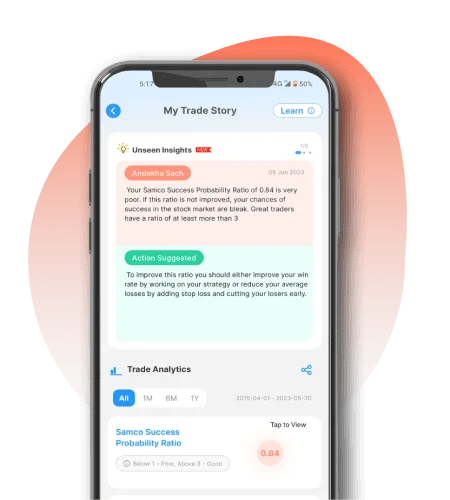Introduction
In the world of options trading, price isn’t the only variable worth watching- volatility can be just as influential. In fact, even if a stock doesn't move a single rupee, your options trade might still lose or gain value. That’s the power—and risk—of volatility.
Understanding how volatility drives option pricing gives traders a significant edge. Whether you're buying a call or selling a straddle, knowing when volatility is likely to expand or contract can make all the difference. This guide explores how implied and historical volatility work, the role of Vega, and how volatility-based strategies can be applied in real-market conditions.
What is Volatility in Options?
Volatility, in simple terms, refers to how much and how quickly a stock’s price moves. In the options world, two types of volatility are critical:
- Historical Volatility (HV) looks at how the asset has moved in the past.
- Implied Volatility (IV) reflects the market's expectations for future movement, based on current option prices.
Think of IV as a sentiment gauge- when traders anticipate sharp moves, IV goes up. When markets are calm and predictable, IV tends to drop.
Here’s the key: Option prices are far more sensitive to implied volatility than historical. That’s because options are priced based on future potential, not past performance.
The Link between Volatility and Option Pricing
Most traders know that option premiums rise with volatility. But why?
The answer lies in option pricing models like Black-Scholes, where volatility is a major input. The higher the expected volatility, the more an option is worth, because there’s a higher chance it ends up in the money.
This is where Vega comes in.
Vega measures how much an option’s premium will change for every 1% change in implied volatility. Options with higher Vega are more sensitive to shifts in IV- especially ATM options with longer expiries.
Let’s say you hold an at-the-money call option on a stock trading at ₹100. If IV spikes from 20% to 30%, that option could gain value even if the stock doesn’t move. That’s the Vega effect.
| Volatility Change | Effect on Premium |
|---|---|
| IV increases | Premium rises |
| IV decreases | Premium falls |
This often confuses newer traders—why is the premium rising even when price action is flat? The answer lies in volatility expectations baked into the option price.
How to Interpret Implied Volatility
Reading IV in isolation isn’t enough. Traders often use additional metrics like:
- IV Rank: Tells you where current IV stands in relation to its 52-week range.
- IV Percentile: Tells you how often IV has been lower than the current level.
Here’s how to think about it:
- High IV Rank (above 70%) → Options are expensive → Better for sellers
- Low IV Rank (below 30%) → Options are cheap → Better for buyers
But a common mistake? Assuming high IV means the stock will fall. That’s not necessarily true. High IV just means a big move is expected—it says nothing about direction.
Example: Before an earnings announcement, a stock’s IV may shoot up due to uncertainty. The actual price may barely budge post-results, but the IV crash alone can wipe out premium value.
Volatility-Based Strategies You Can Use
Once you understand IV, you can tailor your strategies accordingly. Here are a few battle-tested tactics that rely on volatility conditions:
When Volatility is high
Ideal for: Option sellers looking to capitalize on premium decay
1. Short Straddle – Sell ATM Call and Put
Neutral outlook. Profits from IV contraction and time decay.
2. Short Strangle – Sell OTM Call and Put
Slightly wider margin of safety compared to a straddle.
3. Iron Condor – Combine two short spreads.
Designed to benefit from a range-bound market and high IV.
These strategies work best when you believe volatility will drop post-event (like earnings) and price will stay within a range.
When Volatility is Low
Ideal for: Option buyers anticipating a breakout or a rise in IV
1. Long Straddle – Buy ATM Call and Put
Profits from large price swings in either direction.
2. Long Strangle – Buy OTM Call and Put
Cheaper than a straddle, though it needs a bigger move to profit.
3. Calendar Spread – Sell near-term option, buy longer-dated
Exploits IV difference across timeframes (volatility skew).
These are “debit” strategies- you pay upfront, and you want IV to increase after entry.
Mistakes to Avoid When Trading Volatility
Here are a few classic blunders traders often make when dealing with volatility:
- Overpaying in high IV: Buying options when IV is already elevated can lead to losses from the inevitable “IV crush.”
- Misjudging directionality: Don’t assume high IV means a price fall- it only reflects the degree of expected movement.
- Using the wrong strategy: Avoid long straddles when IV is high, or short iron condors when IV is low- it’s a mismatch.
Volatility should inform what strategy you choose, not just when you enter.
Tracking Volatility: Tools That Help
To succeed, you need the right data. Most modern trading platforms, including Samco’s, offer features that simplify volatility analysis:
- IV & Vega in Option Chain: Easily spot which contracts are most affected by volatility shifts.
- IV Rank & Percentile: Gauge whether IV is high or low relative to its history.
- Greeks Dashboard: Use Vega alongside Delta and Theta to get a full picture.
The idea is to stop treating IV as a mystery and start using it as a risk gauge and opportunity filter.
Final Thoughts
Volatility isn’t just a number- it’s a narrative. It reflects the market’s collective expectations, fears, and uncertainty. By learning how to interpret volatility and aligning your strategies accordingly, you move beyond guesswork and into strategic territory.
Don’t just react to volatility- plan around it.
Looking to apply volatility strategies in real time?
Explore Samco’s trading platform, equipped with powerful option analytics and tools designed to help you act confidently in any market condition.








 Easy & quick
Easy & quick